
Date with ArtVilnius'24
The largest art fair in the Baltics celebrated its 15th anniversary
Art fair ArtVilnius presented its 15th anniversary edition last weekend at the Lithuanian Exhibition and Congress Centre Litexpo. It has long become a key event on the art calendar in the Baltic countries and is trying to expand its reach in all geographically possible directions. Over the years, the fair's team has focused on different countries such as Poland, Germany, and Ukraine, and this time it was the Nordic countries. Indeed, quite a few galleries and art institutions from Sweden, Denmark, and Finland participated in the fair. However, it is difficult to say how interesting the Baltic art market is for galleries from this region in general.
Roma Auškalnytė. Pabusk! 2020. Represented by: KLAIPĖDOS GALERIJA
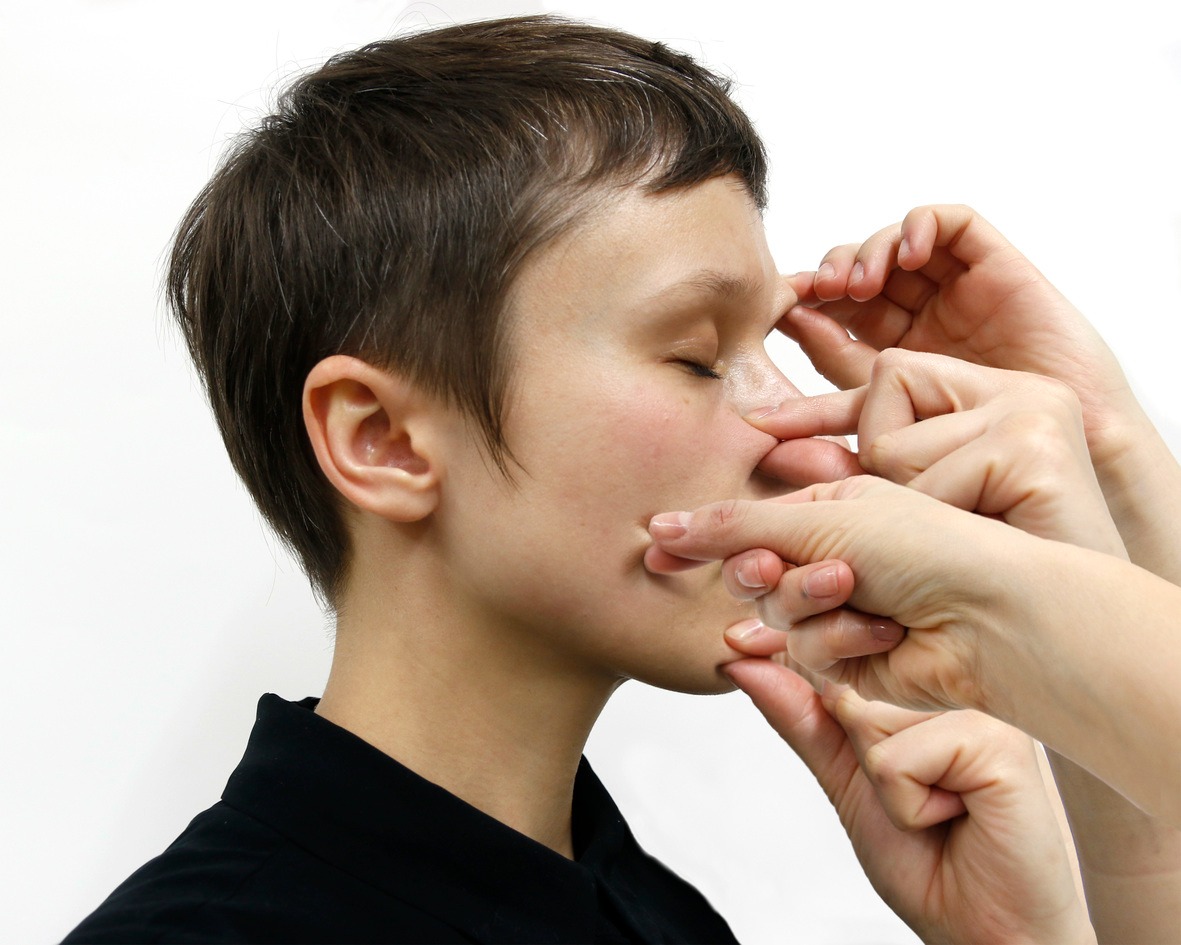
And this is understandable. Collectors in the Baltic countries are primarily focused on their own national art scenes. They try to understand what has happened and is happening within them, and that alone is a considerable amount of information to absorb and "organize." They are interested in direct and immediate contact with their own country’s culture and in supporting those who are active and significant within that cultural framework. Only gradually, over time, do they begin to pay attention to what is happening in the art of neighbouring countries and regions.
Rachele Libeskind work at the booth of Düsseldorf-based gallery wildpalms. Photo: Andrej Vasilenko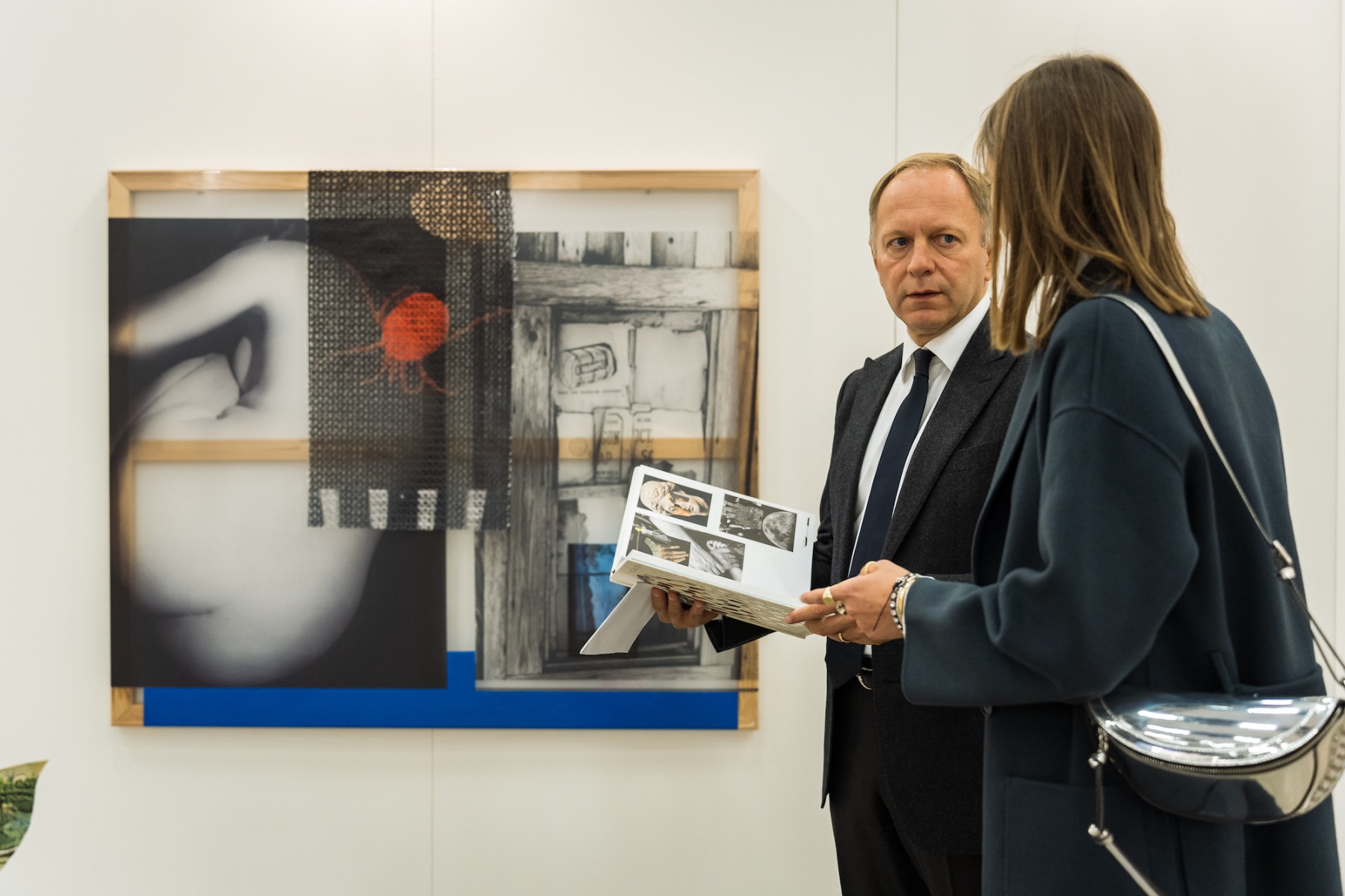
This strong national interest has its progressive side – it fills the gaps in support for contemporary art that state and non-state institutions in these countries cannot always provide. This includes both financial and informational support. On the other hand, galleries that bring art from other countries, especially by artists whose names are not well known, must make significantly greater efforts to engage the audience and spark their interest.
Viewers near the work of Lithuanian painter Viktoras Paukštelis, represented by In Dot Gallery. Photo: Sergej Timofejev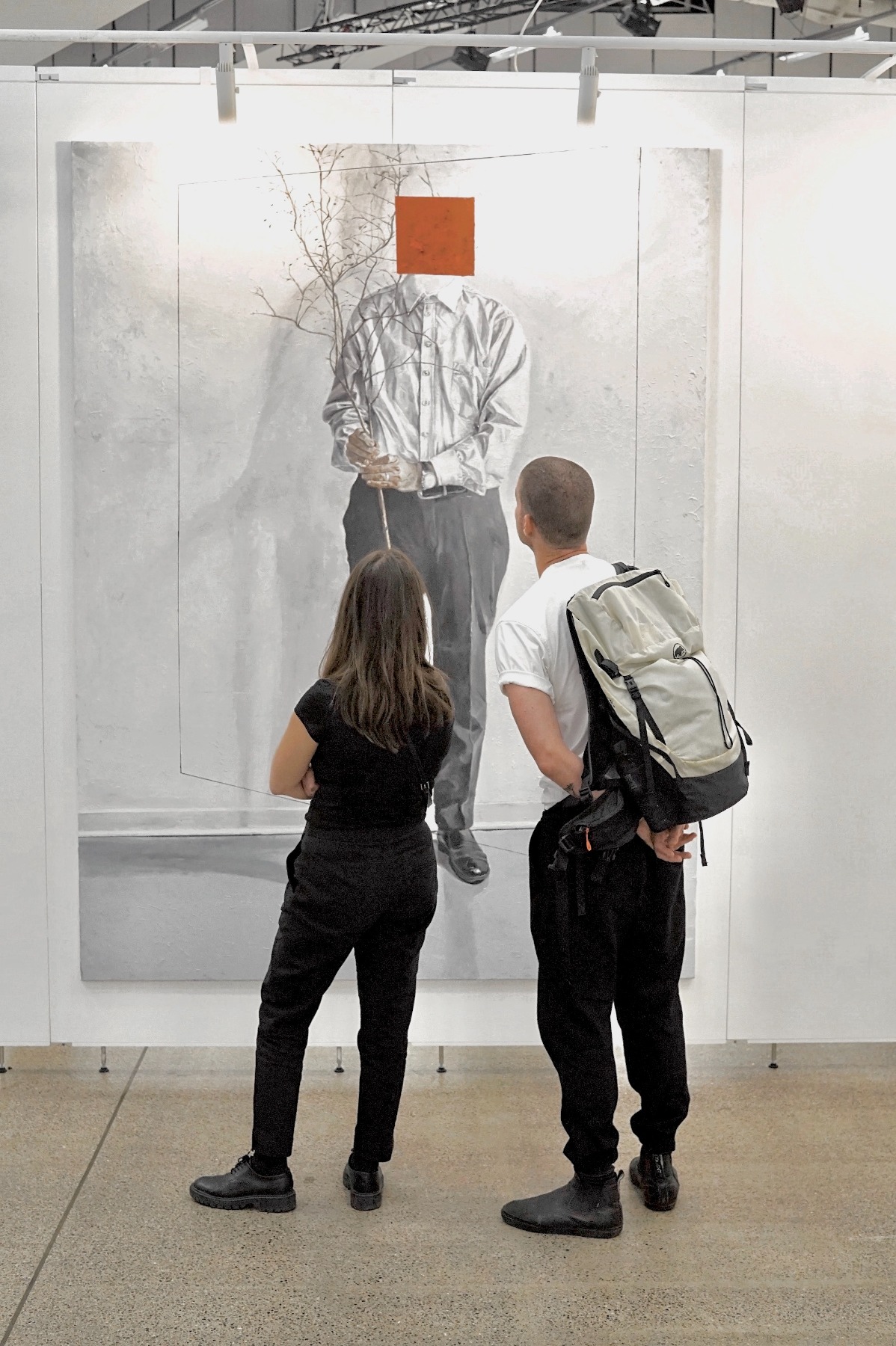
The decision to participate in an art fair in another country is always a risk and a leap into the unknown. In this sense, we must give credit to the galleries that actively engage in "foreign policy." They not only develop their contacts and connections but also carry out an important cultural mission – introducing the local audience to the art of their country. In this regard, it’s worth highlighting the participating galleries from Latvia, which were notably numerous this year – seven in total, a record number.
Māksla XO gallery at ArtVilnius’24. Photo: Andrej Vasilenko
This includes Māksla XO, which presented works by Pauls Liepa, Zane Žeivate, and Anna Heinrihsone, and was selected among the TOP 7 galleries at the fair (according to the international jury). Also making it into the TOP 7 was the gallery Pilot, representing the Latvian Academy of Arts, which showcased works by Maija Kurševa, Klāvs Loris and Keita Melle. Keita, a debutant at the Pilot stand, exhibited her ceramic and milk kinetic installation titled Heritage, which was purchased by an art collector from a Lithuanian dairy production company.
Kristians Fukss. Mickey. 2019. Represtented by: ALMA GALLERY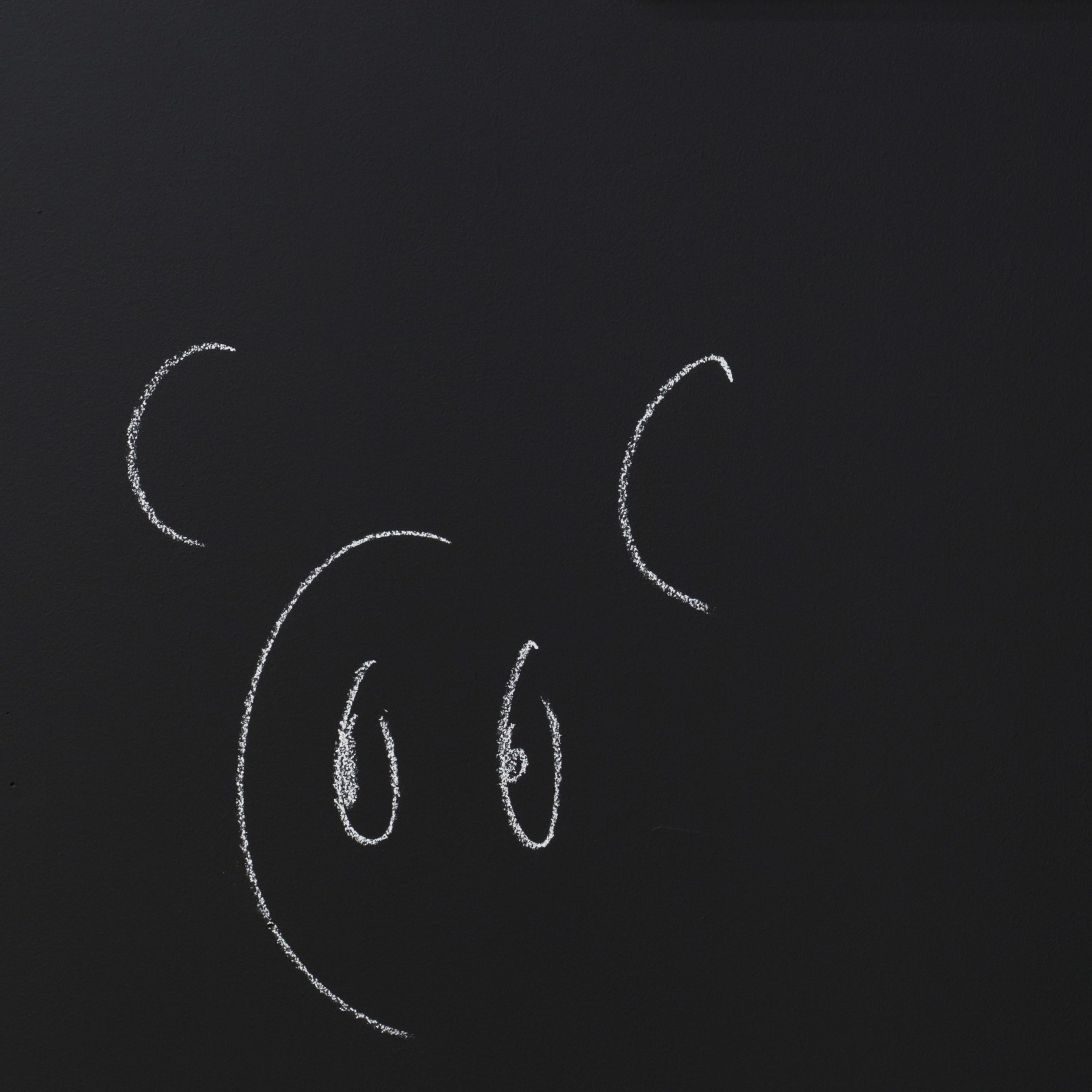
Agijas Sūnas gallery at ArtVilnius’24. Photo: Andrej Vasilenko
The Alma gallery gave a strong showing with with works by Krišs Salmanis, Rasa Jansone, Kristians Fukss, and Sarmīte Māliņa, here was also regular ArtVilnius contributor Agijas Sūnas gallery (featuring paintings by Irēna and Dita Lūse, as well as Gita Šmite). Newcomers to ArtVilnius, the galleries ASNI, ISSP, and Cut Art, made a brave debut, testing their strengths at the fair for the first time.
ISSP gallery at ArtVilnius’24. Photo: Andrej Vasilenko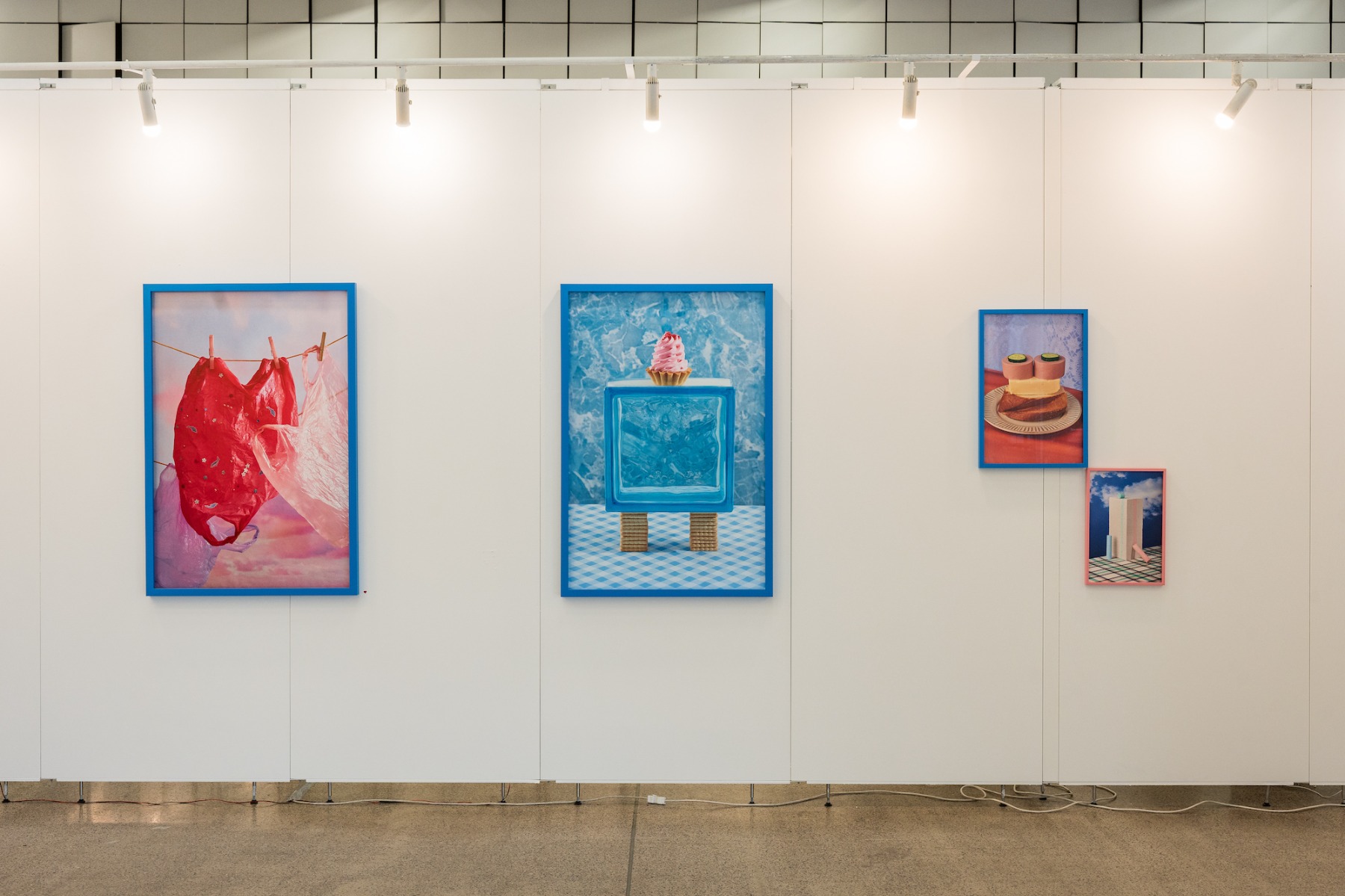
ISSP Gallery has exhibited works by Zane Priede, which can now be viewed in Riga as well (here Zane answers our questions about her exhibition). Gallery’s debut at ArtVilnius was quite successful – by the second of the fair's three days, one piece had to be sent to London, and another to Helsinki. In the more experimental part of ArtVilnius, traditionally called the Projects Zone, participated another Riga’s gallery – 427. Kaspars Groševs brought his works and along with those of Viktor Timofeev and Ieva Kraule-Kūna. Moreover, Kaspars recorded a special mixtape with his audio works, which was also available for purchase at the stand.
Viktor Timofeev. August 30 2024. Represented by: 427
Estonia took a somewhat more reserved approach this year – only two galleries from Tallinn participated in ArtVilnius’24. These were Okapi, which showcased works by Helle Ly Tomberg and Ave Palm, and Tutor, which decided to exhibit objects, drawings, and paintings by Kärt Hammer. Perhaps the Latvian context is geographically and mentally closer to the ArtVilnius audience. Or maybe it just turned out this way this year.
Helle Ly Tomberg. Represented by: OKAPI GALLERY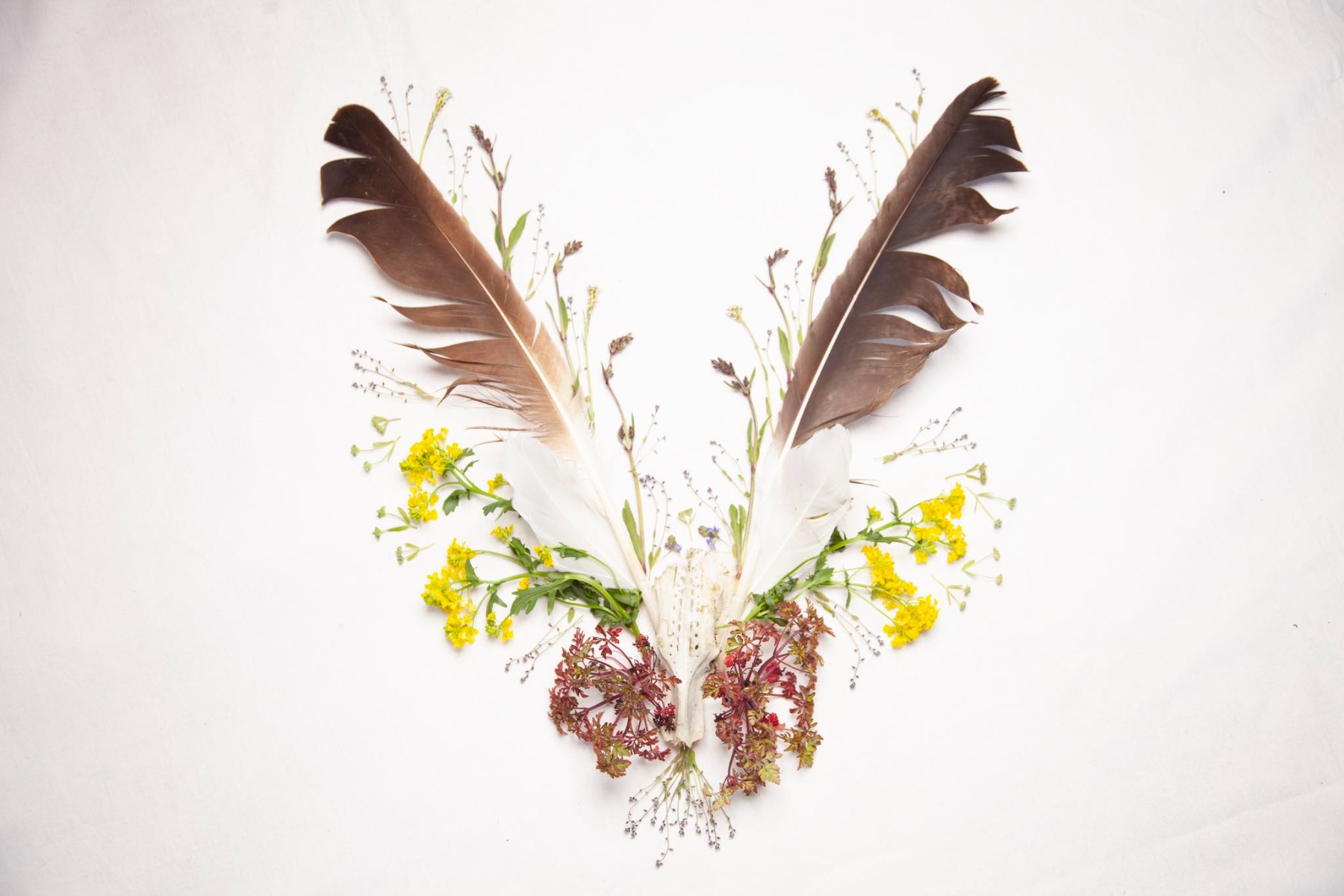
In total, 66 contemporary art galleries, 15 art institutions, and more than 300 artists from 14 countries became participants of ArtVilnius’24. Of these, 20 galleries were exhibiting here for the first time. Among the newcomers was the Düsseldorf-based gallery wildpalms, which brought works by New York-based Italian artist Rachele Libeskind. 'Her work is marked by a poetic articulation of archival material and visual space,' noted the international jury, awarding her the Best Young Artist Award. The jury also recognized Eglė Gineitytė, a painter represented by The Room Gallery, as the Best Artist of the fair for her 'coherent vision of painting that has matured over several decades.' The fair also featured a public vote, and the clear and well-deserved leader of this vote was The Rooster Gallery from Vilnius, representing the young generation of Lithuanian artists. The booth’s scenography, as well as the selection of artists and works, truly left a strong impression.
The Rooster Gallery at ArtVilnius’24. Photo: Andrej Vasilenko
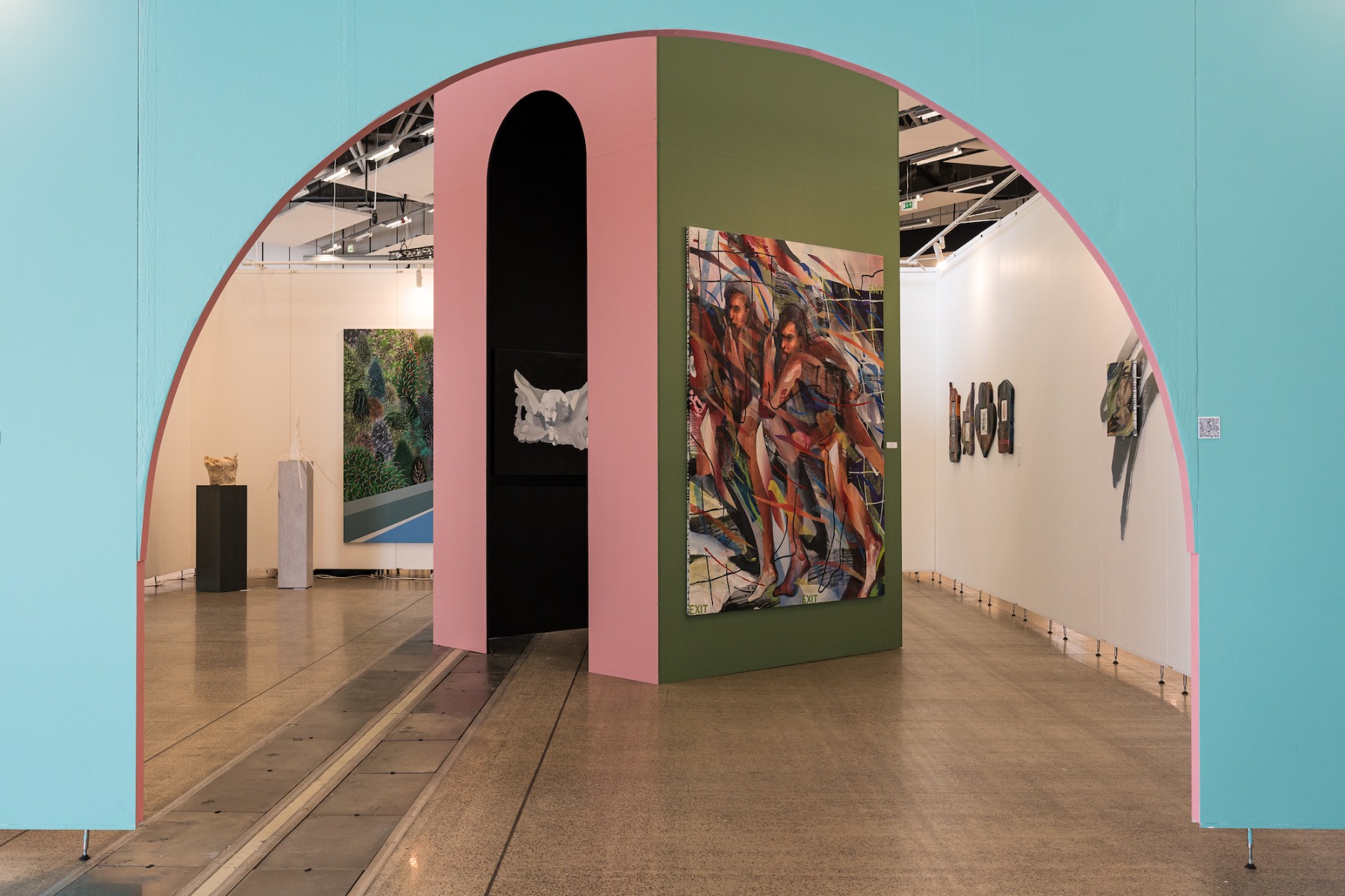
For the third consecutive year, the ArtVilnius Project Zone was entrusted to Valentinas Klimašauskas, a renowned contemporary art curator, writer, and co-curator of the Lithuanian National Pavilion at the 60th Venice Biennale. The three-day program, Agency: Of Mice, Scene & Machines, showcased contemporary artists, galleries, and institutions from Northern Europe.
Katja Novitskova's work Patterns of Activation (gardens of the galaxy) at ArtVilnius’24. Photo: Andrej Vasilenko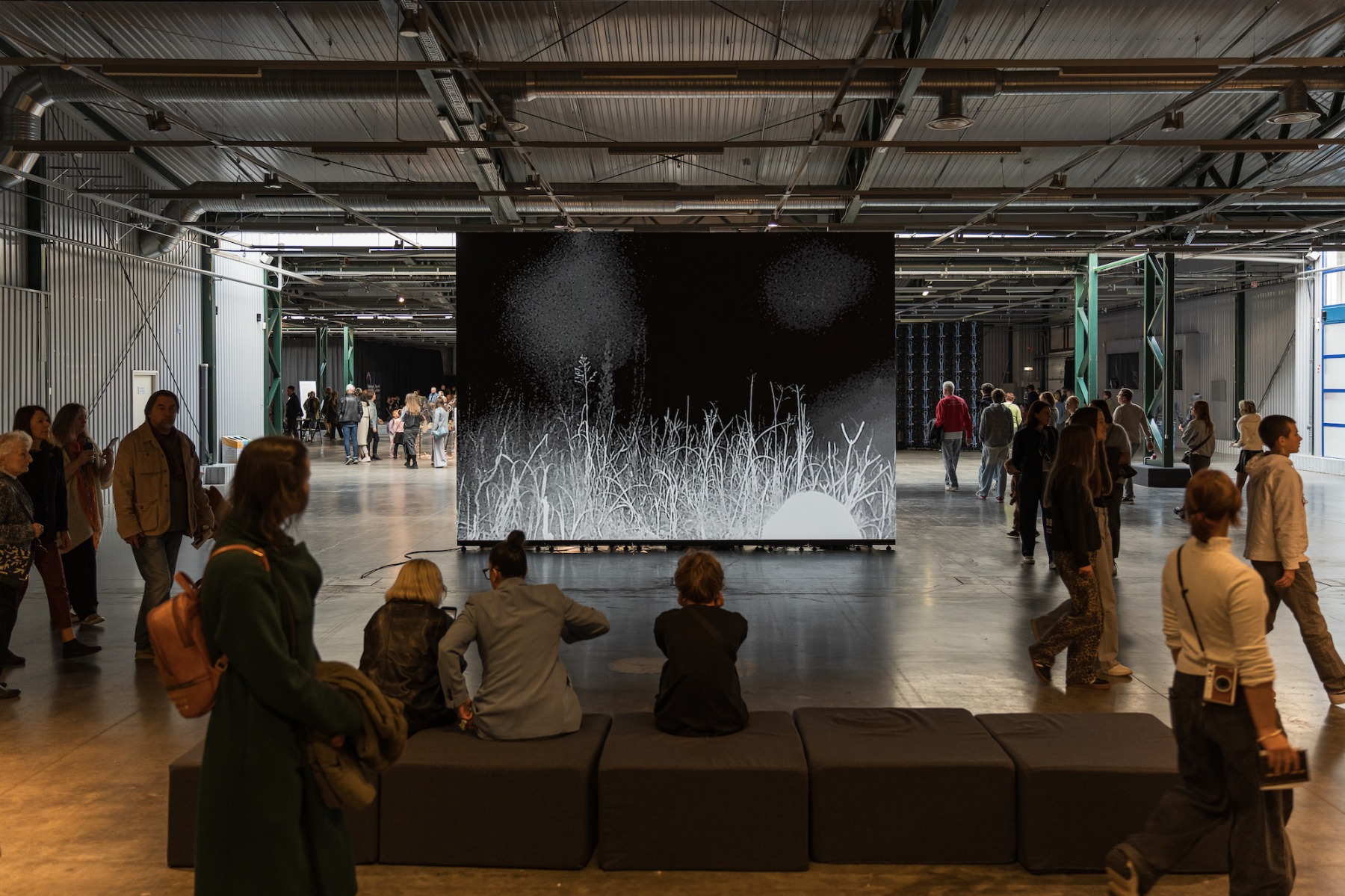
Estonian artist Katja Novitskova also fit into this context, her work Patterns of Activation (gardens of the galaxy) was presented by Temnikova & Kasela Gallery. It is a GIF assemblage of images from various datasets, prepared with the goal of training image processing AI algorithms.'The images Novitskova worked on mostly include wildlife cam photos, astronomy, snail embryos, and monkey blood cells… She actively digs some poetry out of these datasets. Such poetry comes from a combination of technology and the reality that it attempts to capture: glowing eyes of animals that reflect the flash-light of the camera, digital low resolution artifacts, accidentally stunning compositions of galaxies and forests,' writes Domenico Quaranta about this work.
Gabija Grušaitė. Date with an Octopus. Photo: Andrej Vasilenko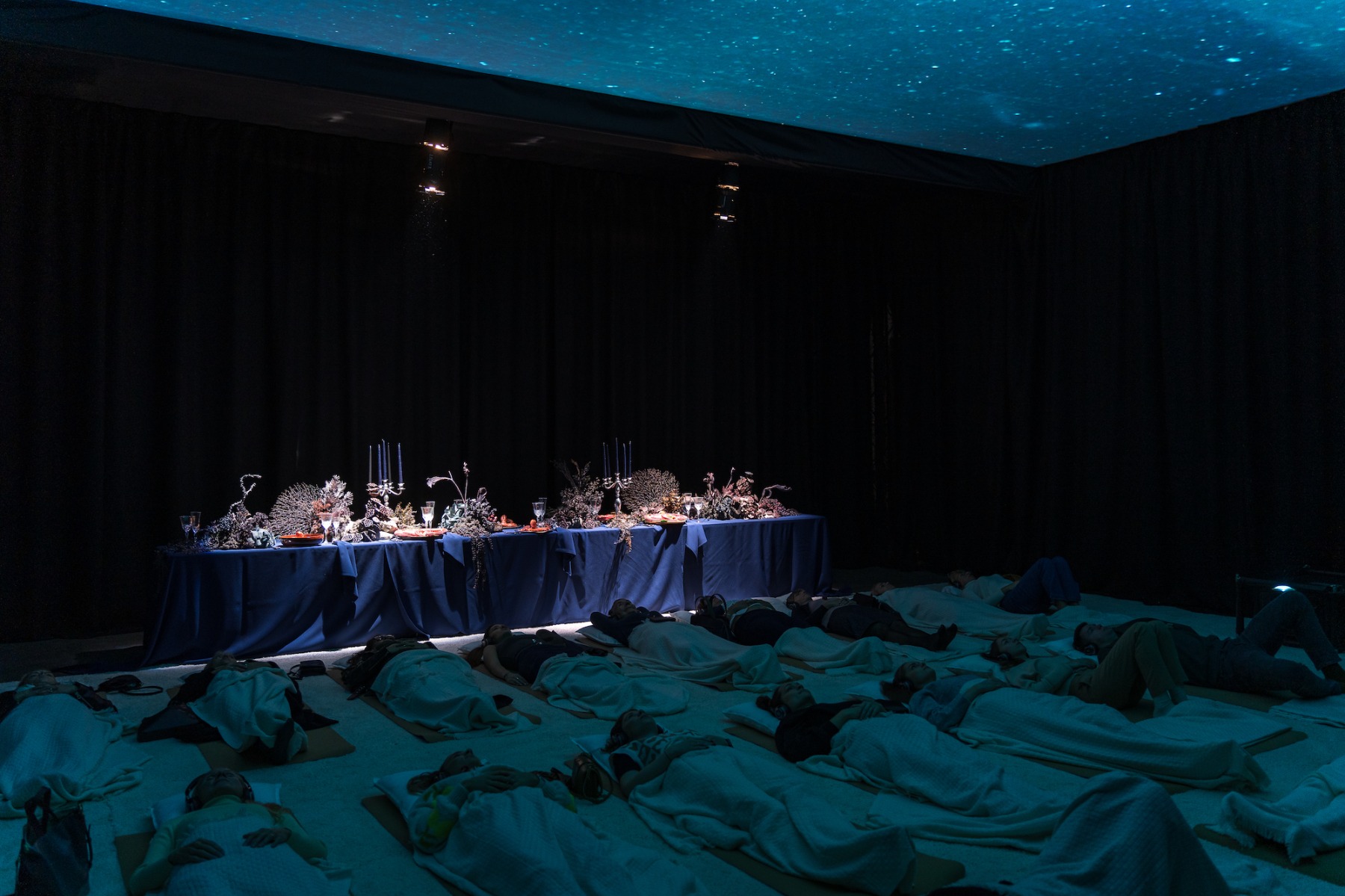
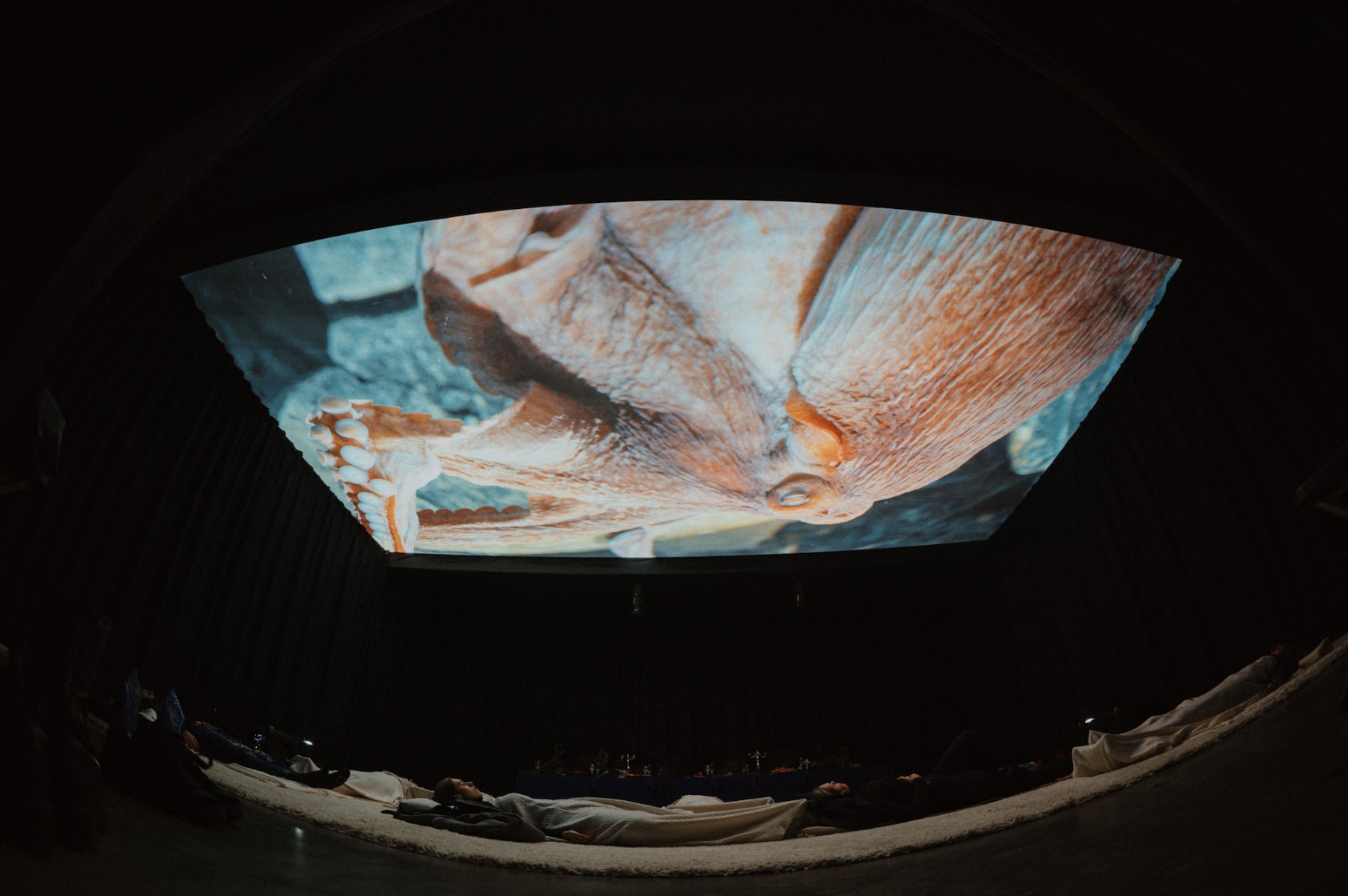
But the most immersive work in the Project Zone was the installation Date with an Octopus, based on the novel Fungal Dream by Gabija Grušaitė. A special pavilion made up of several rooms was constructed for this piece. There was a constant queue at the entrance, and groups of about 20–25 people were allowed in every half hour. 'In the first part, the audience is invited to lie down, make themselves comfortable, relax, and explore their body and consciousness. The blurred boundary between the inner human world and the external world is explored in relation to the Pacific octopus, which is both a concrete physical object/subject as well as a symbol and a fantasy.' The movements of the giant octopus, projected onto the ceiling above the reclining participants, were calm and meditative, providing an excellent counterbalance to the bustling, people-filled art fair full of events.
Ruta Jusionyte. Animals protector. 2024. Represented by: LOUISE GALLERY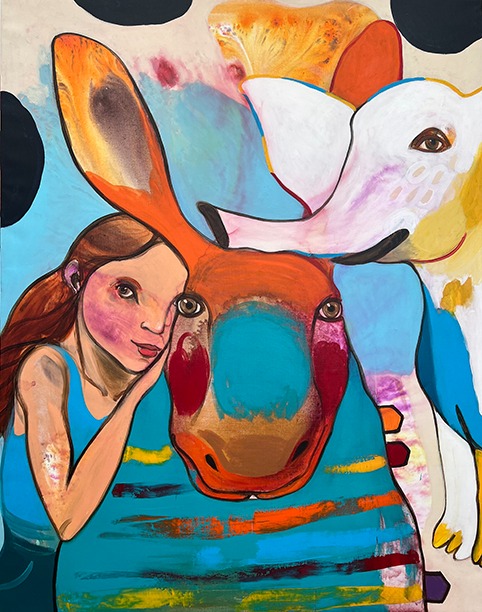
Actually, animals in various combinations were one of the most popular motifs in the works presented by a wide range of galleries from Lithuania. Perhaps we should blame for that the movement of quadrobears, which highlights the theme of the fellowship between humans and the animal world, but nonetheless, I really don't remember seeing such a large number of images featuring real and magical animals in previous editions of ArtVilnius. It seems that we all are looking for friends but don't find them in other humans. Probably, animals are here to help.
Ieva Trinkūnaitė. Where are you taking me? 2024. Represented by: THE ROOSTER GALLERY
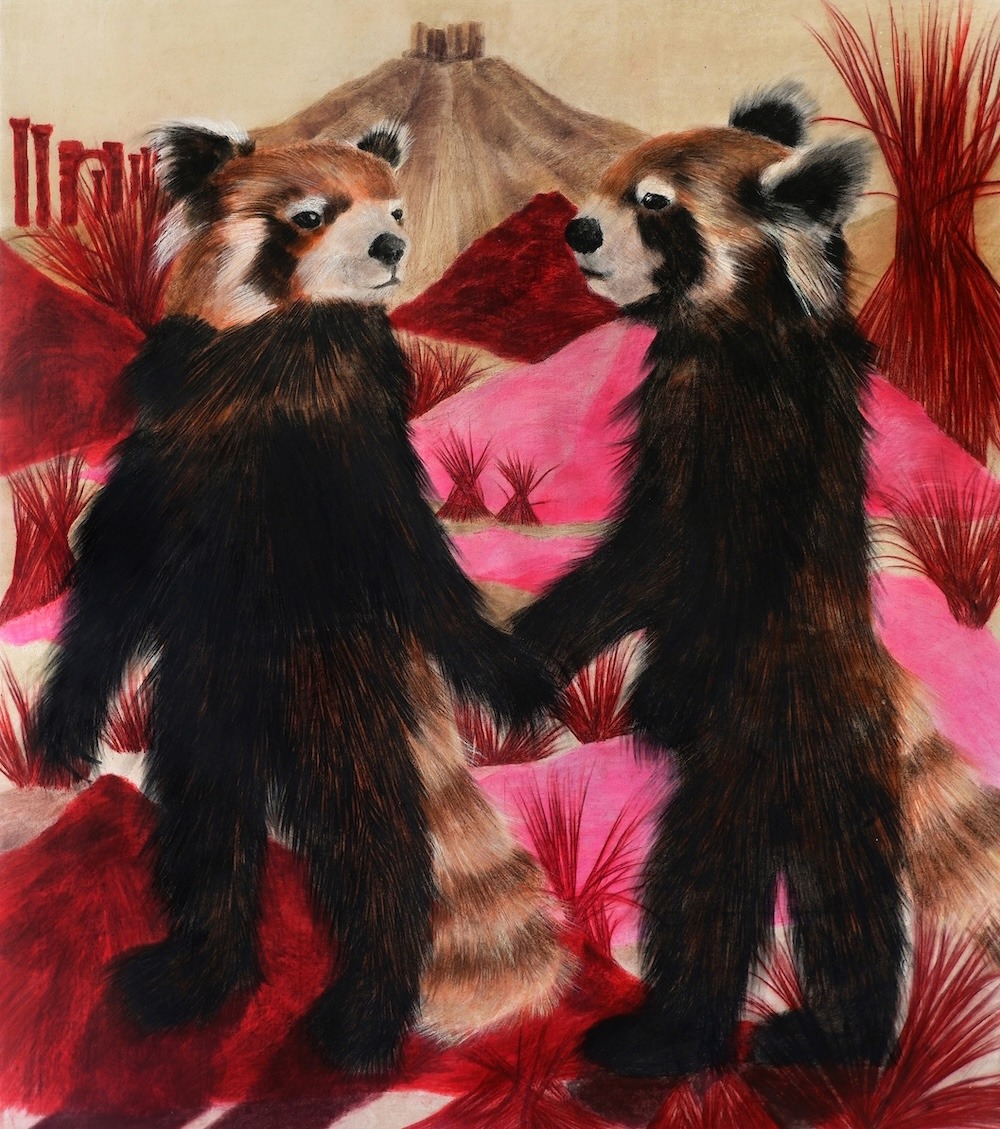
This time, there was also a considerable amount of classic black-and-white photography on display. There were somewhat fewer sculptures and objects at the galleries' stands, but they were traditionally allocated a special section of the exhibition. Earlier this year, more than 80 artists took part in the open call for ArtVilnius’24 sculpture, installation, and performance exhibition Path, from which 17 artists were selected. The curator of the exhibition was the Director of the Estonian Centre for Contemporary Art, curator, and long-time commissioner of the Estonian National Pavilion at the Venice Biennale, Maria Arusoo. The officially “best installation of ArtVilnius’24” became the sculpture For Sale (Parduodama), created by Danas Aleksa, a conceptual interdisciplinary artist. The jury praised this work for its 'poignant commentary on urban renewal, highlighting the specific aesthetics of Vilnius'.
Agate Tūna. From series: Non-place perspectives. 2024.
Represented by: ASNI

It is important to note that an enormous number of people visited the ArtVilnius pavilions over these three days. 'It was interesting that many visitors here really have a trained and experienced eye,' said Auguste Petra and Elīna Drāke from the gallery ASNI. Well, ArtVilnius every year encompasses numerous workshops, discussions, and other events that engage people in the context of contemporary art, significantly contributing to the gradual increase in interest from the Lithuanian public.
ArtVilnius’24. Photo: Andrej Vasilenko
Moreover, this public has also significant opportunities for selection – not only to attend a series of differnet events happening in the beginning of October in the museums and art centers of Vilnius but also to visit the alternative art fair Komisas, which was organized by Lithuanian artist Robertas Narkus along with a group of like-minded artists, just as it was last year. Interestingly, Latvian artist and gallerist Kaspars Groševs was invited to exhibit at both ArtVilnius and Komisas. The ability to change contexts while remaining true to oneself is also an important art, and Kaspars's works looked great in both venues.
Upper image: Anna Heinrihsone. Another Side. 2024. Represented by: MĀKSLA XO